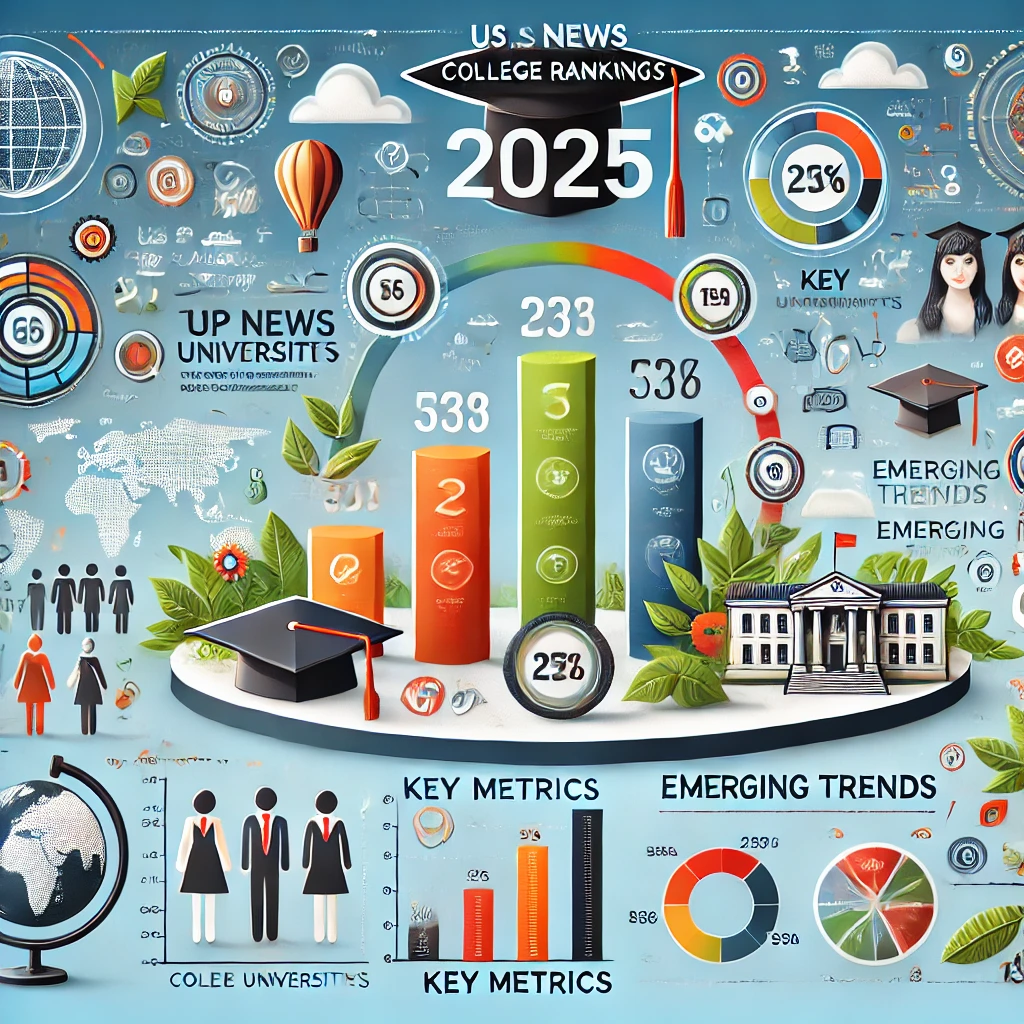
US News College Rankings 2025 Analysis: Insights and Trends
This year, the “US News College Rankings 2025 Analysis” has revealed some intriguing new information that captures the changing nature of American higher education. The rankings, which are among the most reliable resources for assessing schools and universities, are an essential resource for educators, parents, and students. Let us examine in more detail the patterns, indicators, and results influencing this year’s rankings.
What Makes the US News College Rankings 2025 Unique?
The “US News College Rankings 2025 Analysis” stands out for incorporating revised metrics to offer a more holistic evaluation of institutions. This year, additional focus has been placed on social mobility, diversity, and affordability, reflecting the shifting interests of prospective students and their families. Additionally, the rankings continue to value academic reputation, graduation rates, and faculty resources, preserving a balanced approach.
The addition of environmental sustainability measures as ranking criteria in 2025 is one noteworthy development. Higher ratings have been given to colleges with strong sustainability initiatives and green campus initiatives, demonstrating their dedication to addressing climate change and promoting environmentally friendly behaviors.
Key Trends in the 2025 Rankings
1. Rise of Public Universities
According to the “US News College Rankings 2025 Analysis,” public colleges have made considerable progress, undermining the supremacy of private ones. In terms of accessibility, research output, and graduation rates, institutions like the University of California system and other flagship state universities have performed exceptionally well. This change demonstrates how public institutions are becoming more competitive and providing higher-quality education at more reasonable costs.
2. Focus on Social Mobility
One of the main topics of the “US News College Rankings 2025 Analysis” is social mobility. Higher rankings have gone to colleges that successfully assist first-generation and low-income students. Initiatives to lower student loan debt and offer thorough career guidance have been crucial in improving schools’ standing.
3. STEM Dominance
According to the “US News College Rankings 2025 Analysis,” universities with robust STEM (Science, Technology, Engineering, and Mathematics) programs continue to excel. Schools with state-of-the-art research facilities, industry connections, and excellent employment rates for graduates have cemented their top positions in response to the increasing demand for specialists in these sectors.
4. Diversity and Inclusion
Measures of diversity have become more important in the “US News College Rankings 2025 Analysis.” Colleges that celebrate cultural diversity, create inclusive settings, and give students from all backgrounds equal chances have risen in the rankings. Multicultural campus events and diversity grants are examples of initiatives that have received praise and awards.
Top Performers in 2025
Private Universities
- Princeton University continues to be the best in terms of student satisfaction, faculty resources, and academic reputation.
- Motivated by their unmatched research output and worldwide influence, Harvard University and Stanford University are in close pursuit.
Public Academic Institutions
- Because of their creative programs and dedication to student success, the University of California, Berkeley, and the University of Michigan, Ann Arbor have become prominent public universities.
- The University of North Carolina in Chapel Hill has also become well-known for its robust alumni network and affordability.
Metrics Driving the Rankings
A comprehensive set of indicators is used by the “US News College Rankings 2025 Analysis” to assess universities. Here are a few of the crucial elements:
- Academic Reputation: This score is influenced by surveys conducted by high school counselors and peer institutions.
- Graduation and Retention Rates: Stronger student support networks are reflected in colleges with greater graduation rates.
- Faculty Resources: Two important metrics are the percentage of full-time faculty and the student-to-faculty ratio.
- Financial Resources: Better facilities and services are usually offered by schools that spend more per student.
- Student selectivity: measures include admission rates, high school class rank, and standardized test results.
- Social Mobility: One important indicator is how well Pell Grant recipients enroll and graduate.
- Sustainability Efforts: Introduced in 2025, this gauges universities’ dedication to environmental projects.
How Students Can Use the Rankings
For students navigating the college decision process, the “US News College Rankings 2025 Analysis” is a priceless resource.Take these actions to make the most of it:
- Establish Priorities: Pay attention to rankings that fit your financial circumstances, professional aspirations, and academic interests.
- Investigate Beyond the Top 10: Even if they are not in the top tier, many top-notch universities provide specialized programs.
- Think Fit Over Prestige: A school’s qualities in your chosen field may be more important than its overall ranking.
- Make Use of School Profiles: Comprehensive profiles in the rankings include information about student happiness, extracurricular activities, and campus culture.
Criticisms and Limitations
Although the “US News College Rankings 2025 Analysis” provides insightful information, it is not without flaws. Some contend that it overemphasizes quantitative measures, possibly ignoring intangible elements like student satisfaction and school community. Concerns regarding accuracy are further raised by the use of institutions’ self-reported data.
The pressure rankings put on universities to put measures ahead of mission is another frequent criticism, which could result in unbalanced policies or excessive spending. When making a decision, prospective students should consider the rankings as one tool among several.
Future Directions for Rankings The “US News College Rankings 2025 Analysis” shows the increasing trend toward thorough assessments of the university system. We may anticipate even more focus on topics like postgraduate results, mental health resources, and affordability in subsequent editions. The criteria and approaches used to evaluate higher education will change along with the field.
Conclusion
The “US News College Rankings 2025 Analysis” shows the increasing trend toward thorough assessments of the university system. We may anticipate even more focus on topics like postgraduate results, mental health resources, and affordability in subsequent editions. The criteria and approaches used to evaluate higher education will change along with the field.
